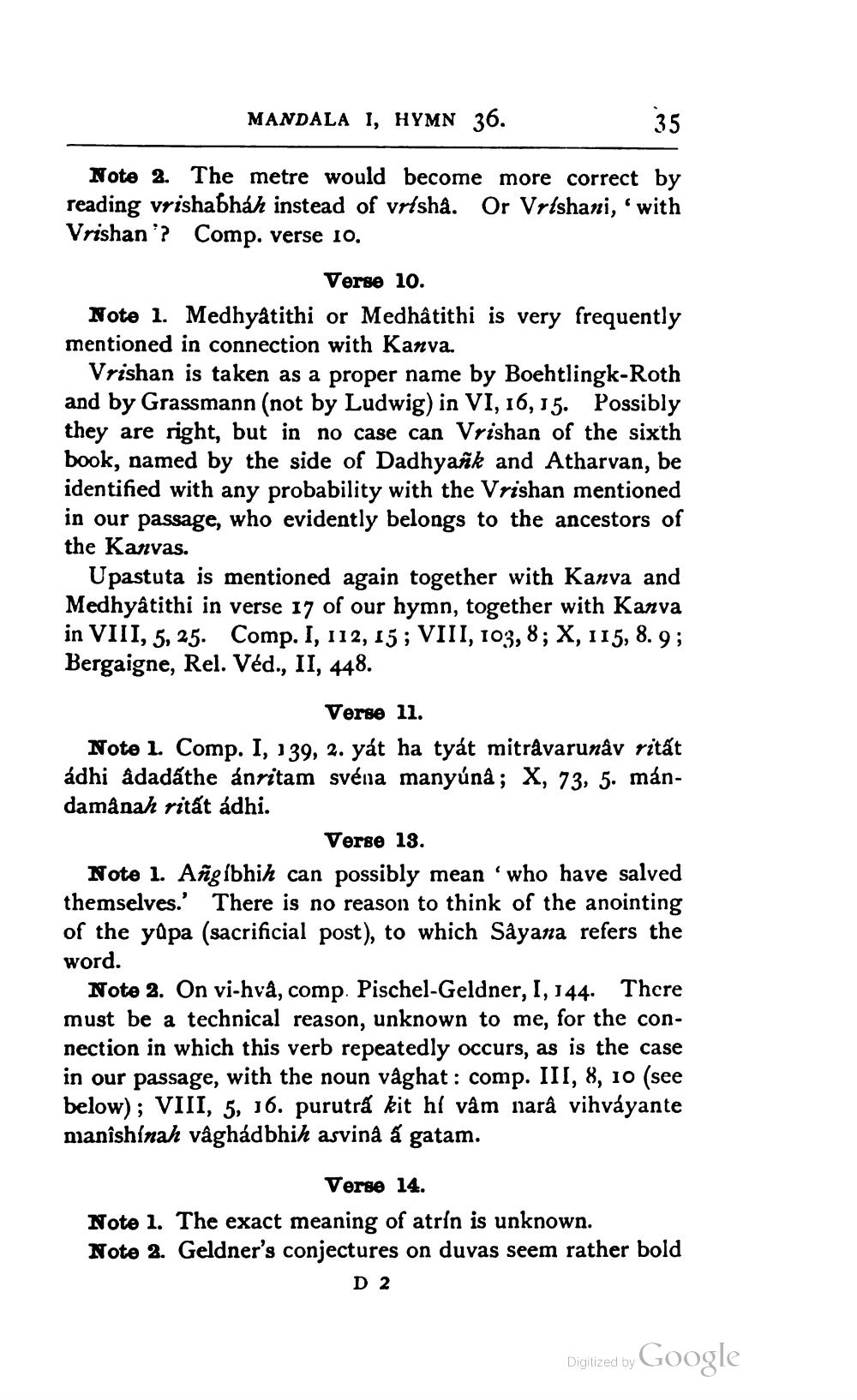________________
MANDALA I, HYMN 36.
35
Note 2. The metre would become more correct by reading vrishabháh instead of vrlshå. Or Vrlshani, with Vrishan? Comp. verse 10.
Verse 10. Note 1. Medhyâtithi or Medhâtithi is very frequently mentioned in connection with Kanva.
Vrishan is taken as a proper name by Boehtlingk-Roth and by Grassmann (not by Ludwig) in VI, 16, 15. Possibly they are right, but in no case can Vrishan of the sixth book, named by the side of Dadhyañk and Atharvan, be identified with any probability with the Vrishan mentioned in our passage, who evidently belongs to the ancestors of the Kanvas.
Upastuta is mentioned again together with Kanva and Medhyâtithi in verse 17 of our hymn, together with Kanva in VIII, 5, 25. Comp. I, 112, 15; VIII, 103, 8; X, 115, 8.9; Bergaigne, Rel. Véd., II, 448.
Verse 11. Note 1. Comp. I, 139, 2. yát ha tyát mitravarunâv ritát ádhi adadáthe ánritam svéna manyúna; X, 73, 5. mándamanah ritát adhi.
Verse 13. Note 1. Angíbhih can possibly mean who have salved themselves.' There is no reason to think of the anointing of the yūpa (sacrificial post), to which Sâyana refers the word.
Note 2. On vi-hvâ, comp. Pischel-Geldner, I, 144. There must be a technical reason, unknown to me, for the connection in which this verb repeatedly occurs, as is the case in our passage, with the noun vâghat: comp. III, 8, 10 (see below); VIII, 5, 16. purutra kit hi vam narâ vihváyante manishinah vâghádbhih asvina á gatam.
Verse 14. Note 1. The exact meaning of atrin is unknown. Note 2. Geldner's conjectures on duvas seem rather bold
D 2
Digitized by Google




